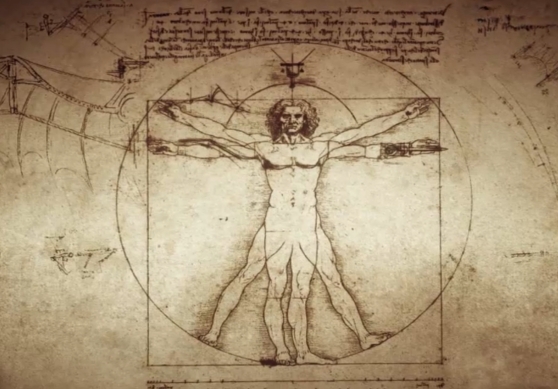
Background Information for The Vitruvian Man:
The Vitruvian Man was made by Leonardo da vinci in the year of 1490. Leonardo da Vinci was inspired to make this picture because of the new age of finding out information about the anatomy of the human body. This picture is accompanied by the notes of Vitruvius. Vitruvius was an ancient Roman architect who wrote a series of ten books on architecture, one of the few collections of books of its type that survived into the Renaissance. In the third volume, which is on the proportions of temples, he states that these buildings should be based on the proportions of man, because the human body is the model of perfection. He justified this by stating that the human body with arms and legs extended fits into perfect geometric forms, the circle, and the square. This drawing shows a male human body in two different forms. This picture is sometimes called, The Canon of Proportions, and even fewer times it is called The Proportions of Man.
Interpretation of Vitruvian Man:
This drawing is based on the ideal human proportions with geometry described by the ancient Roman architect Vitruvius. This image shows a blend of both art and science during the Renaissance period. Also, it shows the interest that da Vinci had in the proportions of man. This version of the Vitruvian man is fundamentally different from the other versions in two ways. First of all, the circle and square used in the drawing are overlapping each other. Second, Leonardo da Vinci had found a key adjustment in the image which made the man appear to be more proportionate. Without this key adjustment, other artists ended up with disproportionate figures. The historical significance of this picture is based upon the teachings of anatomy during the Renaissance time. During this time, many people, especially sculptors and artists, were trying to figure out the proportions of man. The reason for this was so that their artwork and sculptures could be more realistic. The beauty in this picture lies in the perfect proportions of The Vitruvian man. This picture is drawn to such great proportions, which is more pleasing for the eye to view. This picture was very well known and well liked because it was one of the first drawings ever to show proportions of man, and to also write about them.